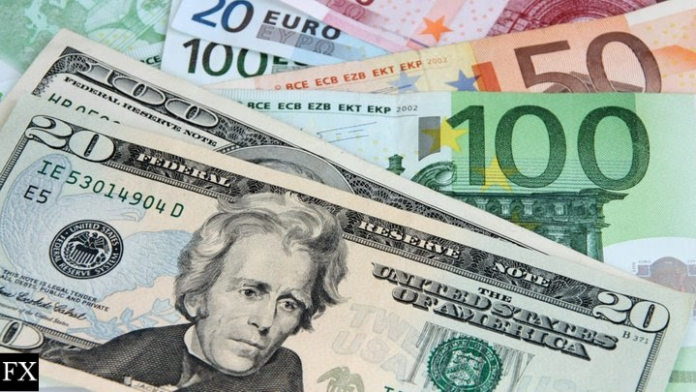Introduction: Euro Stagnates at 1.04 Level
The Euro (EUR) showed little movement in early Thursday trading, hovering around the 1.04 level against the US Dollar (USD). This level has historically proven to be significant, acting as both support and resistance in the past. This current stagnation suggests a market struggling for direction, with several key technical and fundamental factors at play.
Technical Resistance and the 50-Day EMA
The EUR/USD pair is currently contending with the 50-day Exponential Moving Average (EMA), a commonly watched technical indicator. While not a sole determinant of market movement, the 50-day EMA serves as a reference point for many technical traders. The pair’s struggle around this level suggests that it’s not yet ready for a significant move higher.
Beyond the 50-day EMA, a zone of resistance looms above the current price. The 1.05 level is expected to present initial resistance, with this zone potentially extending up to the 1.06 level. The 1.06 mark is considered a crucial level; a break above it would signal a more substantial recovery for the Euro. However, given the current circumstances, such a break is not anticipated.

Fundamentals Point to Continued Downtrend
The prevailing view is that the EUR/USD pair is likely to continue its established downtrend. This outlook is underpinned by the fundamental differences in the monetary policies of the European Central Bank (ECB) and the Federal Reserve (Fed). There are no indications that the ECB will imminently adopt a more aggressive monetary tightening stance, while the Fed is not expected to loosen its current policies in the near future. This policy divergence is a key driver of the strength of the US dollar.
Diverging Central Bank Policies: A Catalyst for USD Strength
The contrast between the ECB and Fed’s approaches is a significant factor. The ECB is likely to maintain its current monetary policy, while the Fed is expected to continue its current path, maintaining or even increasing interest rates to curb inflation. This policy disparity suggests the US Dollar will likely maintain its strength against the Euro.
Geopolitical and Economic Challenges Weigh on Euro
Furthermore, the European Union is facing a confluence of challenges that are weighing heavily on the Euro:
- Potential US Tariffs: The threat of tariffs imposed by the United States is a significant concern for the European economy. Such tariffs could negatively impact European exports, further weakening the Euro.
- Ukrainian Conflict: The ongoing conflict in Ukraine continues to contribute to economic uncertainty and instability within Europe. The war disrupts supply chains, increases energy costs, and weighs on overall economic sentiment.
- Overall Economic Malaise: The overall economic activity in Europe is currently subdued, adding further pressure on the Euro. Concerns about recession and inflation are dampening investor confidence.
Conclusion: Favoring “Cheap US Dollars”
Given the strong USD outlook, the resistance overhead and lack of compelling reasons for a Euro recovery, the market may be more inclined to find opportunities to buy “cheap US Dollars.” The Euro is expected to struggle, and until there are shifts in central bank policy or significant improvements in the EU economic and political landscape, the current downtrend is likely to persist. This may be driven by traders anticipating continued divergence in policy, coupled with a flight to the safety of the US dollar in the face of global uncertainty.
Ready to trade the EUR/USD Forex analysis? Here’s a list of some of the top forex brokers in Europe to check out.

